-
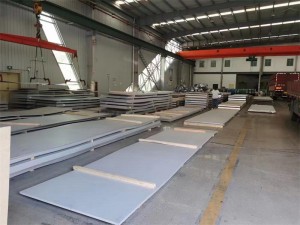
316L stainless steel plate
316L stainless steel plate
316L is a stainless steel material grade, AISI 316L is the corresponding American grade, sus 316L is the corresponding Japanese grade. Our unified digital code is S31603, the standard brand is 022Cr17Ni12Mo2 (the new brand), and the old brand is 00Cr17Ni14Mo2, which means it mainly contains Cr, Ni and Mo, and the number indicates the approximate percentage. The national standard is GB/T 20878-2007 (current version).
Chemical composition
Carbon C: ≤0.030
Silicon Si: ≤1.00
Manganese Mn: ≤2.00
Sulfur S: ≤0.030
P: ≤0.045
Cr: 16.00 ~ 18.00
Nickel Ni: 10.00 ~ 14.00
Molybdenum Mo: 2.00 ~ 3.00
Corrosion resistance
316L is widely used in the chemical industry because of its excellent corrosion resistance. 316L is also a derivative steel of 18-8 austenitic stainless steel, with 2 ~ 3% Mo element added. On the basis of 316L, many kinds of steel are also derived, such as 316Ti after adding a small amount of Ti, 316N after adding a small amount of N, and 317L after increasing the content of Ni and Mo.
Most of the existing 316L on the market are produced according to the American standard. For cost consideration, steel mills generally put the Ni content of products as close to the lower limit as possible. American standards stipulate that 316L contains 10 to 14% Ni, while Japanese standards stipulate that 316L contains 12 to 15% Ni. According to the minimum standard, there is a 2% difference between the American standard and the Japanese standard in the Ni content, which is reflected in the price is quite huge, so customers need to see clearly when they buy 316L products, the products refer to ASTM or JIS standard.
The Mo content of 316L makes the steel have excellent corrosion resistance, and can be safely used in the environment containing halogen ions such as Cl-. Because 316L is mainly used for its chemical properties, steel mills have slightly lower surface inspection requirements for 316L (relative to 304), and customers with higher surface requirements should strengthen surface inspection.
Mechanical property
Tensile strength σb (MPa) : ≥480
Conditional yield strength σ0.2 (MPa) : ≥177
Elongation δ5 (%) : ≥40
Reduction rate of cross-section (%) : ≥60
Hardness: ≤187HB; 90 HRB or less; 200 hv or less
Density: 7.98g/cm3;
Specific heat capacity ratio (20℃) : 0.502J/(g*K)
-
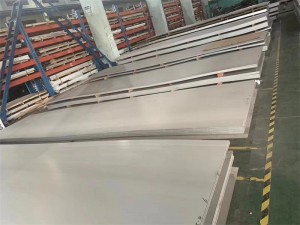
304 stainless steel plate
Chemical composition
304 stainless steel brand: 0Cr18Ni9 (0Cr19Ni9) 06Cr19Ni9 S30408
Chemical composition :C: ≤0.08, Si: ≤1.0 Mn: ≤2.0, Cr: 18.0 ~ 20.0, Ni: 8.0 ~ 10.5, S: ≤0.03, P: ≤0.035 N≤0.1.
304L
304L is more resistant to corrosion and 304L contains less carbon.
304 widely used, with good corrosion resistance, heat resistance, low temperature strength and mechanical characteristics; Stamping bending and other hot processing good, no heat treatment hardening phenomenon (non-magnetic, using temperature -196°C~800°C).
304L has excellent resistance to grain boundary corrosion after welding or stress removal; In the absence of heat treatment, it can also maintain good corrosion resistance, and the service temperature is -196°C-800°C.
Basic information
According to the process, it can be divided into two types: hot rolled and cold rolled. According to the structure characteristics of steel, it can be divided into five types: austenitic type, austenitic – ferritic type, ferritic type, martensitic type and precipitation-hardened type. Requirements can withstand oxalic acid, sulfuric acid-ferric sulfate, nitric acid, nitric acid-hydrofluoric acid, sulfuric acid-copper sulfate, phosphoric acid, formic acid, acetic acid and other acids corrosion, widely used in chemical, food, medicine, paper making, petroleum, atomic energy and other industries, as well as construction, kitchenware, tableware, vehicles, household appliances and all kinds of parts.
Stainless steel plate surface smooth, high plasticity, toughness and mechanical strength, acid, alkaline gas, solution and other media corrosion resistance. It is an alloy steel that does not rust easily, but not absolutely.
Stainless steel plate according to the method of hot rolled and cold rolled two kinds, including thickness 0.02-4 mm thin cold plate and 4.5-100 mm medium thick plate.
In order to ensure that the mechanical properties such as yield strength, tensile strength, elongation and hardness of all kinds of stainless steel plates meet the requirements, the steel plates must undergo annealing, solution treatment, aging treatment and other heat treatment before delivery. 05.10 88.57.29.38 Special symbol
Corrosion resistance of stainless steel mainly depends on its alloy composition (chromium, nickel, titanium, silicon, aluminum, etc.) and internal organizational structure, the main role is chromium element. Chromium has high chemical stability, can form passivation film on the surface of steel, so that the metal is isolated from the outside world, protect the steel plate from oxidation, increase the corrosion resistance of the steel plate. After the passivation film is destroyed, the corrosion resistance decreases.
Drawing property
Dry mill drawing
The most common filament and short silk on the market, 304 stainless steel plate after processing such surface, shows a good decorative effect, can meet the requirements of general decorative materials. Generally speaking, 304 stainless steel can form good results after a scrub. Due to the low cost, simple operation, low processing cost and wide application of this kind of processing equipment, it has become a necessary equipment for processing center. So most processing centers can provide long wire and short wire frosted board, 304 steel accounted for more than 80%.
Oil grinding wire drawing
304 series stainless steel after oil grinding reflects the perfect decorative effect, widely used in elevator, home appliances and other decorative panels. Cold rolled 304 stainless steel can generally achieve good results after a scrub pass, there are some processing centers on the market can provide hot rolled stainless steel oil scrub processing, its effect and cold rolled oil grinding comparable. Oil-based drawing also has long silk and short silk. Elevator decoration generally uses filament, and all kinds of small household appliances, kitchenware and other two kinds of grain have a choice
-
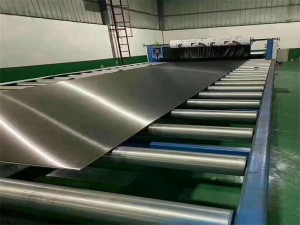
201 Stainless Steel
Product introduction
Mainly used for decorative pipe, industrial pipe, some shallow tensile products.201 stainless steel plate has the ability to resist general corrosion similar to the unstable nichcr 304. Prolonged heating of 201 stainless steel plates in the chrome-carbide degree temperature range may affect alloy 321 stainless steel plates and 347 in harsh corrosive media. 201 Stainless steel plates are mainly used for high temperature applications, which require the material to have strong sensitization resistance to prevent intergranular corrosion at lower temperatures.
Chemical composition
Chemicai composition(WT%)
(C) Carbon :≤0.15
(Si) Silicon :≤0.75
(Mn) Manganese :5.5 ~ 7.50
(Cr) Chromium :16.0 to 18.0
(N) Nitrogen :≤0.25
(Ni) nickel :3.50 ~ 5.50
(P) Phosphorus :≤0.060
(S) Sulfur :≤0.030
Physical property
Tensile strength :100,000 to 180,000 psi
Yield strength :50,000 to 150,000 psi
Density :.280lbs/cubic inch(density 7.93g/cm3)
Usage
Used in chemical, coal and petroleum industries with high corrosion resistance to grain boundaries, outdoor machines, heat-resistant parts of building materials and parts with difficulty in heat treatment;
1. Oil exhaust gas combustion pipeline;
2. Engine exhaust pipe;
3. Boiler shell, heat exchanger, heating furnace components;
4. Diesel engine muffler components;
5. Boiler pressure vessel;
6. Chemical transport truck;
7. Expansion joint;
8. Spiral welded pipe for furnace pipe and dryer
-

Q355d open plate
The steel grade of thick steel plate is basically the same as that of thin steel plate. In terms of products, in addition to bridge steel plate, boiler steel plate, automobile manufacturing steel plate, pressure vessel steel plate and multi-layer high-pressure vessel steel plate, some varieties of steel plates, such as automobile girder steel plate (2.5 ~ 10mm thick), checkered steel plate (2.5 ~ 8mm thick), stainless steel plate, heat-resistant steel plate and other varieties are crossed with thin plates.
In addition, the steel plate also has material. Not all steel plates are the same. The material is different, and the place where the steel plate is used is also different.
-
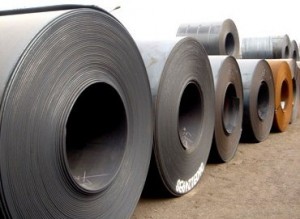
Q355b open plate
The steel grade of thick steel plate is basically the same as that of thin steel plate. In terms of products, in addition to bridge steel plate, boiler steel plate, automobile manufacturing steel plate, pressure vessel steel plate and multi-layer high-pressure vessel steel plate, some varieties of steel plates, such as automobile girder steel plate (2.5 ~ 10mm thick), checkered steel plate (2.5 ~ 8mm thick), stainless steel plate, heat-resistant steel plate and other varieties are crossed with thin plates.
In addition, the steel plate also has material. Not all steel plates are the same. The material is different, and the place where the steel plate is used is also different.
-
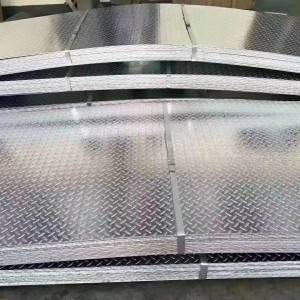
Steel plate
Steel Plate is one of the most popular hot rolled, low carbon steel plates used in manufacturing, fabrication, and repair projects. A36 Steel plate adds strength and rigidity to any project at a lower price compared to other grades of steel plate. It is easy to weld, cut, form and machine. Metals Depot stocks hundreds of thicknesses and sizes of steel plate that you can buy online in ready to ship precut or mill sizes or you can order just what you need custom Cut to Size in small or large quantity at wholesale prices.
-

Low Carbon Steel Plate
With the development of science, Technology and Industry, higher requirements are put forward for materials, such as higher strength, resistance to high temperature, high pressure, low temperature, corrosion resistance, wear resistance and other special physical and chemical properties, carbon Steel can not completely meet the requirements.
-

Q 355b steel plate
Q355b large diameter thick wall steel pipe is a kind of material. It used to be called seamless steel pipe. The carbon content of the steel is about 0.16%. Mn was extracted separately because of the high content of manganese in the five elements (C, Si, Mn, P, s).
Main characteristics of thick wall steel pipe: good comprehensive performance, low temperature performance, cold stamping performance, welding performance and machinability.